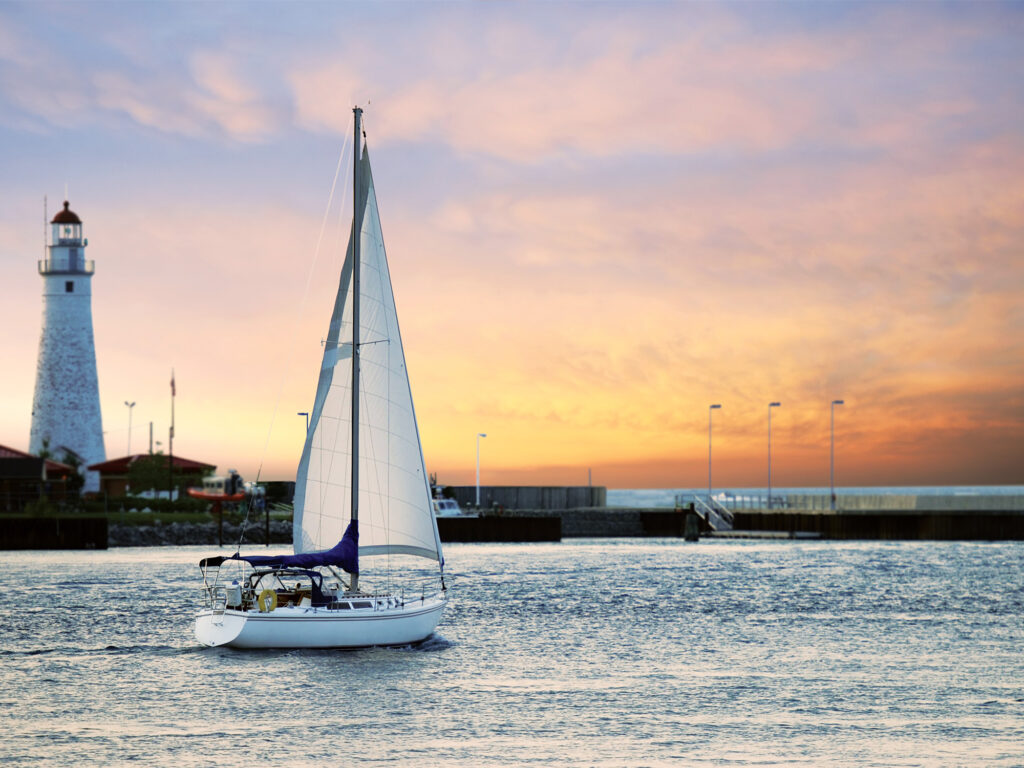
Organizing a plan for a good day of sailing or a longer cruise is an important first step in optimizing the experience.
I start by penciling several dates on my calendar and then watching the weather forecast as the dates come closer. Perfect weather might not arrive as frequently as desired, but a little rain, light wind or even a good blow is never a reason to avoid heading out for a sail. Make sure the entire crew has the proper clothing on hand for the anticipated weather.
The next item is to declare, in advance, how long you plan to spend on the water. If the crew expects a three-hour sail, don’t change the plan and stay out for six hours. Think through a plan of the day before you leave the dock.
Crews are happiest when you sail with the correct number of people on board. For example, a 40-footer might need six people to handle the boat efficiently. If there are 15 people on board, the boat is overcrowded, and most sailors will be unable to participate in any crew work. People like to participate. When everyone has a designated job, the crew will be happier.
Study a chart before leaving your berth. I set a place to head for, depending on the direction and strength of the wind. On the Chesapeake Bay where I live, there are endless destinations. A typical day might be to sail around a few lighthouses, anchor off a beach for lunch, or explore a remote creek. Show the proposed course on the chart to the full crew so that they understand where you are sailing. Note any danger spots such as shallow water or a riptide. People don’t like surprises.
What sailors do like is adventure. They enjoy seeing things from the water, where the view is always different than from land. It seems as if the environment changes as the day passes. The wind shifts, currents change the color of the water, new sights appear, and there are other boats to salute. How often do people wave to each other while driving an automobile? On the water, there is always a friendly wave. Clearly, people are happy.
Run through a checklist of safety items before sailing. Your gear should be properly stowed, and the sails should be ready to hoist. Make sure the crew have applied sunscreen, have their foul-weather gear on the boat, and are wearing a hat and sunglasses. It is better for someone to run back to the car to get their gear than to spend a day on the water missing important items. Also, make sure there are life jackets for everyone. Pointing out the location of safety gear is essential.
I find that sailors alternate between being chatty and being reflective. It is easy to become mesmerized by the water and the wind.
Once everyone is on board, before heading out, conduct a crew meeting so that everyone understands the day’s plan. Ask if anyone has a special request. Crews appreciate the opportunity to provide input. (Your mission plan can be modified later if the weather changes.) The crew meeting is also the time to assign specific duties. Let people know that there will be a rotation on the helm, so everyone will have a chance to steer.
Once the boat is underway and the sails are set, run through a few practice maneuvers so that the crew are comfortable with their duties. Be disciplined regarding crew rotations. It is easy to forget to give everyone a chance to steer, trim or have some quiet time. I’ve been on boats where someone seems to yell more and more about less and less. The top sailors are quiet and measured, with their comments coming during tense moments in a strong gust of wind, or a close encounter with another boat. A calm leader instills confidence in a crew.
I find that sailors alternate between being chatty and being reflective. It is easy to become mesmerized by the water and the wind. Sailors tend to be as one with the motion of the boat.
At the same time, the best conversations take place on the water. People tend to be open and enthusiastic. If one crewmember seems quiet, take a moment to ask a question. This will get the person engaged. And remember: What is said on the boat stays on the boat. This is a good policy.
After sailing, I write down the experience details in a logbook. It’s fun to review your days on the water, and my logbooks give me good ideas for what else I can do on the water. Also, encourage photography throughout the sail. It’s fun to pass around pictures later.
Before disbanding, conclude the day with a second crew meeting to review the day’s sail. If you are a crewmember, always offer to lend a hand for cleanup. As the saying goes: Many hands make light work.
You never know exactly what is going to happen during a daysail or a multiple-day cruise, but the goal should be to make sure everyone on the boat has fun and wants to come back for more.








